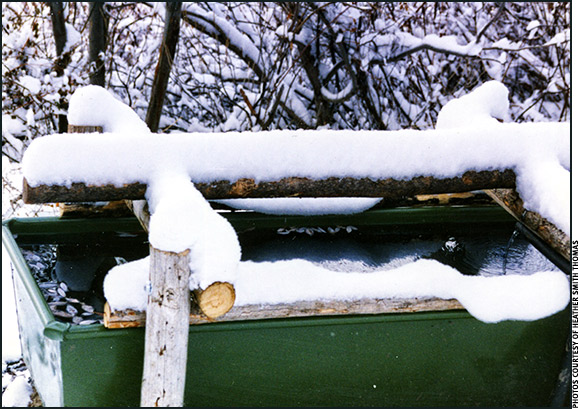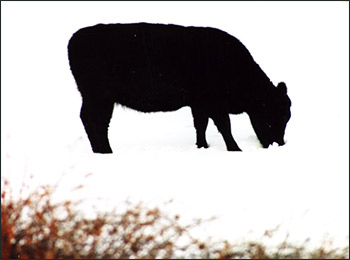
Importance of Winter Water
Provide an open water source to cattle, even if there is snow on the ground.
Cattle have to consume more feed during cold weather to generate additional body heat. A great deal of body heat can be produced by the breakdown of forages in the rumen, due to the heat of fermentation and digestion. In order to process the additional feed, however, the digestive tract needs adequate fluid. A cow’s water requirement may not be as high in the winter as it is in the summer, but she needs to drink enough water in cold weather to handle the demands of ruminant digestion and increased metabolism to prevent dehydration and impaction. Thus, it is important to provide adequate water for livestock during cold weather.
Julie Walker, Extension beef specialist for South Dakota State University, says if cattle don’t have water, they won’t eat. Drinking and eating are closely correlated. If they don’t eat enough, they don’t have fuel to stay warm.
“Fermentation in the rumen generates heat, and helps alleviate cold stress,” she says.
Cattle always need water, and the more they eat, the more they must drink in order to process the feed.

Cattle generally learn to eat snow by mimicking other cows or their mothers, if calves are wintering with their mothers. If you simply put a herd of cows out on winter pasture and they are not accustomed to eating snow, many are slow to learn.
“It’s crucial to keep water sources open (not covered with ice) and make sure they have an adequate supply of water. We know that cows can eat snow, but it can’t be crusted over, and some cows don’t eat snow as readily as others. We don’t really know how to teach cows to eat snow,” she says.
Cattle generally learn to eat snow by mimicking other cows or their mothers, if calves are wintering with their mothers. If you simply put a herd of cows out on winter pasture and they are not accustomed to eating snow, many are slow to learn.
“We can’t depend on cattle utilizing snow for moisture,” says Walker.
“They should always have a water source. Some cows may not come to it every day if they choose to stay out and graze and lick snow, but it’s there when they want it. Some cows will only come in for water every other day or so because snow consumption provides much of what they need.
“Research has shown that water consumption is around 6 gallons per day for pregnant dry cows at 40° Fahrenheit. However, we don’t know how much water they actually need in these situations with snow providing part of the fluid requirement, because we can’t replicate nature in a research study. We just know that cows need adequate water (via snow or some other source) to prevent dehydration,” says Walker.
It is important to monitor cows — and their water sources — through winter and know if they are drinking enough, eating enough and maintaining adequate body condition.

Editor’s Note: Heather Smith Thomas is a freelance writer and cattlewoman from Salmon, Idaho.






